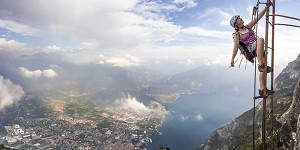
The Dolomites need no introducing as a summer climbing venue, however many people don't realise that the climbing is equally impressive during the winter months. There are literally icefalls everywhere, covering all grades and lengths, set in some of the most dramatic scenery in Europe. All this and with the exception of Serrai di Sottoguda it's not even crowded. In addition to this the piste skiing, ski touring and mountaineering is equally fantastic, making for an impressive and versatile winter venue.
This article only covers the immediate area around the Sella Massif in the Livinallongo, Alta Badia and Cortina regions of the Dolomites. Excellent ice climbing can also be found in the Brenta and Pala Dolomites in particular; however they are not covered in this article.
When to come
The ice climbing season starts fairly early with most of the higher falls being climbable from mid November. Towards mid January to the end of February the icefalls fill out and generally speaking are at their most amenable difficulty wise. The end of the season varies depending on the current climate but most of the falls can be climbed through March and some of the higher falls particularly on Sassolungo and the Marmolada into early April.
Getting to the Dolomites
The Dolomites are easily accessible from three airports all a similar distance away. Innsbruck is the closest airport within 2 hours driving distance of the Sella over the Brenner Pass. Cars can be hired from the airport from a number of different companies.
Venice Marco Polo is the other main airport within 2 and a half hours drive from the Sella. There are again a number of car hire companies. Alternatively there are several public transport options from Venice; a direct bus runs throughout high season from Venice to the villages surrounding the Sella, or alternatively a more frequent train service runs to Belluno, from where it is then possible to catch a number of buses.
Treviso airport, though only small, is actually 15 minutes closer than Venice if you can get a flight there. Public transport is available to the centre of Treviso or into Venice, from where you can take a train / bus as above.
Alternatively it is possible to drive from the UK via Belgium and Germany before approaching the Dolomites from the North entering at Pedraces (recently renamed Badia Abtei). I usually stay in a hotel near Munich and do the trip in two days. Hire cars are expensive, around £150 per week. BMC members can get a discount through Hertz.
Where to stay
The towns of Arabba, Canazei, Cortina, Corvara, Colfasco, La Ville, Pedraces and Selva are all good locations from which to reach any of these climbs. Camping is available in both Colfosco, Cortina and Canazei, and hotels can be found in all of the towns.
Weather
As always in the mountains the weather can change very quickly. Make sure you prepare accordingly, don't get caught out! I find the Arabba based forecasting station to be the most accurate forecast (updated at 4pm each day). It is generally accepted that the optimum temperature for ice climbing is between -6˚C and -1˚C.
Protection
A standard ice climbing rack consisting of 8 or so ice screws will be sufficient for most of the icefall climbs here. There are often abseil points on the more classic lines though on some of the more remote falls you will need to abseil off an Abalakov thread. (For details on creating an Abalakov thread please see...) For the mixed routes a rack of nuts, several cams and some hexes should be taken in addition.
Grading
In the Dolomites the standard WI (Water Ice) grade is used to denote the difficulty of an iceclimb. This typically goes from WI1 to WI6+ though higher grades for sustained overhanging ice have recently been suggested. The standard M (Mixed) grade is used for rock pitches in between the ice pitches. Mixed grades typically start at M4 or M5 and go up to M13+, though as ever the upper scale is open-ended.
Guidebooks
Unfortunately there is currently no comprehensive English guidebook for ice climbing in the Dolomites. There are however several excellent guidebooks to choose from:
This is the most comprehensive guidebook for the area though it's written in Italian. It covers the majority of iceclimbs East of Bolzano. Volume 1 covers the area to the West predominantly focusing on the Brenta region (which isn't covered in this article). The guidebook is clearly set out with an excellent general map at the start and then sketched maps to illustrate the location of individual climbs. There are photos of roughly 80% of the falls making identification easy even if you struggle with the Italian. Probably the best choice of guidebook (certainly if you speak Italian) and certainly the most comprehensive.
ADVERTISEMENT
The Togir Click has been specially designed to ensure maximum comfort. Its shape has been optimally tailored to the form and structure of the 2-layer foam and webbing construction. Creating the perfect harmony of stability, comfort and freedom of movement.
Features:
- Special two-part webbing construction ensures maximum comfort
- Two-layer foam construction for ideal balance between stability and comfort
- Fully adjustable leg loops and waist belt through click buckle
- The new innovative click buckle prevents the buckle from being threaded incorrectly
- Patented tie-in protector prevents the harness from abrasion damage
- 4 specially shaped gear loops made from high-quality synthetic material
- Attachments for 3 ice screw carabiners
- Very strong haul loop
- Functional Drop Seat clip
More Information: Mammut Website
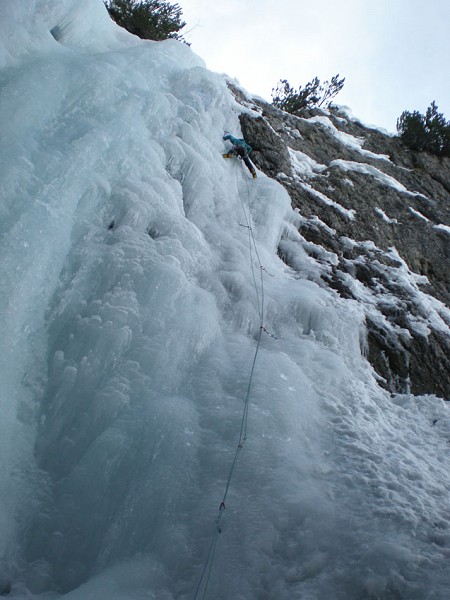
The German equivalent of Ghiaccio Verticale, though not as comprehensive in amount of icefalls listed. Those that are listed however have excellent topo's, diagrams and photos. It also shows the location of fixed belay points that exist on the multi pitch climbs, a nice addition. If you're a German speaker and just after the classic climbs then this guidebook is probably for you. Alpine Ice: The 600 best ice falls in the Alps This guidebook is written in English, and what is there is well written. However it only covers a couple of the ultra classics in the Dolomites. If you are only planning a flying visit or passing through this is fine, however if you want something more extensive I'd go for one of the above.
Other resources
There is some literature available online for ice climbing in the Dolomites though it's never very extensive. Planetmountain and Climbers are the obvious websites to bear in mind.
Accessing the climbs / moving in winter
With the exception of the very convenient Serrai di Sottoguda and some of the drytooling crags, accessing the climbs detailed below is best done on touring skis or snowshoes. The generous amount of snow usually encountered in the winter months will ensure that you spend the day swimming if you just opt for the crampon approach. For advice on moving in the winter see the following informative article.
Main areas to visit
Below are what I consider to be the best ice climbing, mixed and drytooling venues in the region. I've also included three outstanding alpine mountain days. They are all marked on the following map:
Iceclimbs
Guidebooks: Ghiaccio Verticale Volume 2
Alpine Ice: The 600 best ice falls in the Alps
Overview: Sottoguda is the gem of Dolomites winter ice climbing and an almost obligatory destination if you're in the area. It is an exceptionally steep sided gorge situated beneath the Marmolada, the highest peak in the Dolomites. Sottoguda is home to the Cattedrale and Excalibur, two of the most famous icefalls in Italy outside of Cogne. There are over 40 iceclimbs in the gorge ranging from WI2 to WI6+, each displaying vastly different characteristics. Most are equipped with fixed abseil and belay points making it exceptionally convenient. There are many multipitch routes up to 120m in length, often with intermediate anchors pre-placed.
There are also some fantastic mixed routes in the gorge, many at fairly amenable grades for those wishing to progress to harder mixed climbing. These are often bolt protected (if you can find them under the ice).
Recommended climbs: Palestrina (WI2), Cascata del Gelato (WI3), Cascata del Sole (WI3+), Cascata delle Attraversate (WI4), La Cattedrale destro (WI4+), Excalibur (WI4+/5), La Cattedrale centrale (WI5), La Cattedrale sinistro (WI5+/6).
Negatives: Don't expect peace and quiet, as although there are never usually many climbers here you will certainly encounter lots of skiers doing the WWI tour. If you love being the centre of attention and flexing to the crowd of onlookers however, this is the place for you.
2. Colfosco and Val Lasties (Val Badia ice climbing)
Guidebooks: Ghiaccio Verticale Volume 2
Alpine Ice: The 600 best ice falls in the Alps
Overview: Two different climbing areas here but both featuring a number of classic icefalls that form consistently every year. The North Face of the Sella Massif situated opposite Colfosco rarely receives any sun throughout the winter and as such has a number of fantastic falls which are nearly always in great condition. These falls can be easily accessed from the Gardena Pass via a cross country piste and are surrounded by fantastic scenery. La Spada di Damocle, Solo per Pochi and Lujanta are Dolomite classics.
The Val Lasties is a beautiful valley carving through the Sella Massif from East to West. Although the valley only contains a few falls, they are all of excellent quality. They can also be combined with an easy ski tour starting from the Sass Pordoi cablecar for a full day out.
Recommended climbs: Onda su Onda (WI3), Goulottina (WI3+), Lujanta (WI4), La Spada di Damocle (WI4+), Solo per Pochi (WI5), Cassiopeo (WI5), Lasties (WI5).
Negatives: The falls located in the Val Lasties require a fairly long walk in if not skied to from above.
Guidebooks: Ghiaccio Verticale Volume 2
Overview: The brooding presence of the Sassolungo massif will be a familiar sight to anyone who has stayed in the Val Gardena before. All the routes here are generally long, less frequented and involve a lot of mixed climbing. For those who love long mountain days in relative tranquillity this is the place for you. Some excellent gully climbs!
Recommended climbs: Cascata della Nord (WI3), Candela dello Spallone (WI4/M4), Clean Gully (WI4/M4+), Mistica (WI4+).
Negatives: For many of the gullies a safe snowpack is absolutely essential.
Guidebooks: Ghiaccio Verticale Volume 2 Eisklettern in Sudtirol
Overview: This impressively steep sided valley contains a number of fantastic single and multi pitch icefalls. The walk-ins here are generally longer than the surrounding venues. That said, the scenery is fantastic and solitude is nearly always guaranteed. For those fancying a change it is also possible to do the Via Ferrata Sandro Pertini (Grade 4B). Make sure you prepare accordingly though as on the less steep sections the wire will be buried. It is possible to ski off the top back down towards Selva.
Recommended climbs: Tunnel (WI3/M4), Perla Azzurra (WI3+), Palestrina 1, 2, 3 & 4 (WI3/3+), Jumbo Jet (WI5+).
Negatives: Care must be taken when climbing the icefalls on the south side of the valley early or late in the season due to the aspect.
Guidebooks: Ghiaccio Verticale Volume 2 Eisklettern in Sudtirol
Overview: The Val Gardena plays host to only a few falls but they are of exceptional quality. Alhough situated a reasonable distance apart they can all be accessed via a short drive from Ortisei, the main town in the area. Bullaccia is particularly impressive, rising 140m in one continuous fall some 40m wide.
Recommended climbs: Bullaccia (WI3+), Il Figlio (WI3+), Pilat (WI5+).
Negatives: The climbs are well spaced with reasonable walk-ins. Great if you're passing through but maybe not an ideal base if you're looking to do a lot of climbing.
Guidebooks: Ghiaccio Verticale Volume 2 Eisklettern in Sudtirol
Overview: The Val di Fassa, already famous for its pistes and ski mountaineering is also a great winter climbing venue.
Cascata di Fontanazzo right is one of the best beginner falls around and is worth a special mention. Though technically 6 pitches in length it is not strictly a multi pitch climb, rather a series of 6 individual icefalls leading into one another following a series of natural steps. The icefalls follow a fairly consistent level of difficulty and are nearly always in great condition. There are equipped abseils at the top of each fall and it is possible to retreat at any of the stages. Whilst guides use the first 'pitch' frequently with clients, the upper icefalls are generally quieter (though it can get crowded in peak season). The falls navigate their way through thick forest with an almost fairytale feel, allowing great views over the Val di Fassa. It's worth trying to go all the way as the last icefall is the largest, most impressive and least frequented.
Rio Pelous is also worth a special mention and again is one of the Dolomite classics.
Recommended climbs: Arbacia (WI3), Cascata di Fontanazzo right (WI3+), Cascata del Rio Pelous (WI4+), Cascata Col de Carantegn (WI5).
Negatives: The classic icefalls in the valley can get quite busy in peak season.
Guidebooks: Ghiaccio Verticale Volume 2
Overview: There are only two icefalls that form consistently on Monte Civetta but they are both well worth seeking out. They are long, and feel serious due to the remote environment (Hypercoldai in particular is also pretty hard for the grade). If you tour into them you get a fantastic ski back out after!
Recommended climbs: Paperoga (WI3+), Hypercoldai (WI4).
Negatives: A safe snowpack is essential for the walk in, the environment is very remote.
Guidebooks: Ghiaccio Verticale Volume 2
Overview: Another location with only a few icefalls that deserves a special mention. The village of Armentarola is situated on the Alta Badia side of the Valparola pass and has one particularly impressive icefall. Sasso Dlacia or Sasso Ghiacciato is an extensive icefall on the Armentarola piste coming down from the Lagazoui. The icefall is so wide and offers so many lines it is impossible to give it a grade. As such it is a great training venue for a group of mixed abilities.
Recommended climbs: Sasso Ghiacciato (WI2-5?)
Negatives: The icefalls are predominantly situated on the side of a popular piste so don't expect peace and quiet. If you love playing to the crowd however...
Guidebooks: Ghiaccio Verticale Volume 2
Overview: This isn't so much one crag as opposed to a series of classic icefalls around the town of Cortina. The majority of these are located on or near the three Tofanas. Boite Water and Sotecordes in particular are well worth seeking out, for the situation as much as the climbing.
Recommended climbs: Cristallina (WI3+), Cascata Felizon (WI4+), Boite Water (WI4+), Sotecordes (WI5).
Negatives: The climbs are well spaced making it difficult to do several in a day. However the walk-ins are generally quite long anyway. Cortina is a perfect base for accessing all the climbs described here and is a lovely destination in itself, offering many possible activities and some fantastic piste skiing.
Guidebooks: Ghiaccio Verticale Volume 2
Alpine Ice: The 600 best ice falls in the Alps
Overview: Val Travenanzes is arguably the hidden gem of the Dolomites ice climbing, it's famous but rarely visited. Offering more climbs than Sottoguda in a peaceful and tranquil setting it's not to be missed. There are icefalls of every shape, size and gradient and as such is suitable for all levels of climber. Certainly from a mountaineering point of view it is one of the most beautiful and impressive spots in the Dolomites due to the remoteness and high concentration of excellent climbs. You need to make a day of it however is the walk-in is fairly long and the access difficult.
Recommended climbs: Cascata del Compleanno (WI3+), Cascata dell'Ungulato Morto (WI3+), Sogno Canadese (WI4+), Belvedere (WI4+), Mano d'Acqua (WI4+), Due Senza (WI5), L'Ira di Albe (WI5), Chantalmania (WI5), Il Sogno di Luca (WI5), Bufera (WI5), Diamante (WI5+).
Negatives: The access to the valley is long and the climbs are in an extremely remote setting; make sure you prepare accordingly.
If you had to choose five ice climbs to do in the Dolomites?
Cascata del Sole (WI3+) – Sottoguda:
A lovely 4 pitch climb up the side of the gorge on usually excellent ice. The walk in takes 5 minutes, the gorge is stunning, there are equipped belay and abseil stations, the climbing is varied, perfect! If WI3+ seems a bit easy try going direct on the first pitch. The 3rd pitch up the narrow cigar can be anything up to WI4+ in early or late season.
Cascata di Fontanazzo Destra (WI3+) – Val di Fassa:
This is one of the best beginner falls around and is worth a special mention. Though technically 6 pitches in length it is not strictly a multi pitch climb, rather a series of 6 individual icefalls leading into one another following a series of natural steps. The icefalls follow a fairly consistent level of difficulty and are nearly always in great condition. There are equipped abseils at the top of each fall and it is possible to retreat at any of the stages. Whilst guides use the first 'pitch' frequently with clients, the upper icefalls are generally quieter (though it can get crowded in peak season). The falls navigate their way through thick forest with an almost fairytale feel, allowing great views over the Val di Fassa. It's worth trying to go all the way as the last icefall is the largest, most impressive and least frequented.
La Spada di Damocle (WI4+) – Val Badia, Colfosco:
The famous sword of Damocle needs no introducing; suffice to say it lives up to the hype. Sustained climbing, in an amazing situation, on a wonderfully aesthetic fall.
Sogno Canadese (WI4+) – Val Travenanzes:
The route navigates a spectacular series of hanging curtains in one continuous fall for 200m. Sustained and consistent climbing with breathtaking scenery.
Cassiopeo (WI5) – Val Lasties:
Cassiopeo is a stupendous 135m uniform pillar of 90˚ ice in stunning scenery that catches the sun for most of the day. One of the superclassics of the Alps. Though the first pitch is usually done in one 55m dash for glory you can belay on the rock on the right after 35m if you need a rest!
Mixed and drytooling
Overview: Lagorai is a lovely little mixed and drytooling venue in a beautiful and remote location. Although there are only a few routes they are all of good quality. On the completely dry routes the rock is actually of exceptional quality, a trait not often associated with drytooling crags. There are also some fantastic iceclimbs as well; most notably La Scoperta di Margot and Cascata di San Lugano (a 130m and 80m WI3 respectively) are well worth seeking out. Though the walk-in is long you can have a complete day climbing on all mediums; drytooling, mixed and ice.
Recommended climbs: Bolina (M6), La Piciola (M7), La Popa (M7+/8).
Negatives: The climbs are very remote with a long walk-in.
Guidebooks: Ghiaccio Verticale Volume 2
Overview: Grotta di Pian is a relatively new drytooling venue that has been predominantly bolted by Mario Prinoth and Renato Bernard with the assistance of other local climbers. It features climbs of all grades, the majority of which are totally dry. The exceptions to this are Per la Madonna (M10), Albertina (M11), Night event (WI5/M) and Candela della Lesta (WI5). The cave receives the sun nearly all day and is located in beautiful forest surroundings making for a very relaxed environment. The wide range of grades means it is suitable for both beginners and experts all year round. It is an excellent training venue for those looking to progress to longer mixed routes in the mountains.
Recommended climbs: Iris (D5+), Yaniroquay (D6), Ospiti (D7), Attraverso Pian (D8), Marlene (D9), Per la Madonna (M10), Albertina (M11), Candela della Lesta (WI5), Night event (WI 5/M).
Negatives: As with most dedicated drytooling venues the rock isn't of outstanding quality; take care when belaying, a helmet is obligatory. The venue receives the sun for most of the day so care must be taken when climbing the two icefalls later in the season.
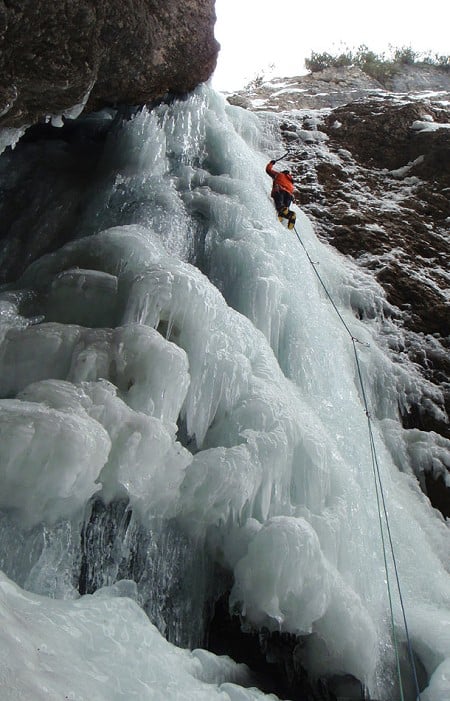
Guidebooks: Ghiaccio Verticale Volume 2
Overview: The Alpe di Siusi dry venue is only small but offers some great climbs if you're in the region and the weather is too warm for the larger iceclimbs. There are also three fantastic mixed climbs, two of which form at an amenable grade.
Recommended climbs: Sciliar (M6), Siusi (M6+), Razzes (M9).
Negatives: There is only a small amount of climbing on offer so it's best to combine it with a trip to some of the nearby icefalls in the Val Gardena region.
Guidebooks: Ghiaccio Verticale Volume 2
Overview: This is a beautiful cave in sight of the Tre Cime, right by the popular summer climbing venue. The cave is only 50m from the road so access is incredibly convenient. Even if you're not planning on climbing here it's worth a look if you're passing as it has a real fairytale feel inside the cave. The mixed climbs are all very difficult but there are also three beautiful icefalls just outside between WI3 and WI3+ if you wanted something easier.
Recommended climbs: Stille Erinerungen (M8+), Fly in the Wind (M10), Mr Big Ben (M12).
Negatives: The icefalls can get quite busy at weekends due to the ease of access and close proximity to the road.
Guidebooks: Currently no guidebook, though most of the route names are graffitied at the bottom.
Overview: The Grotta del Lupo, bolted a few years ago by Gianmario Meneghin Ghin, is located on the shore of Lake Centro Cadore in the Comune di Domegge di Cadore, Dolomites.
The cave is steeply overhanging offering some very testing lines. This has resulted in recent visits by some of Italy's finest, including Mauro Bubu Bole, Massimo Da Pozzo, Kurt Astner, Herbert Klammer, Jenny Lavarda, Angelika Rainer, Mario Prinoth and many others.
All routes are equipped with in-situ quickdraws and lower off anchors. The proximity to the lake means the temperatures remain fairly mild so take care when judging the solidarity of the central waterfall.
Recommended climbs: Il Demone e la Fata (D8), L'uomo Sogna di Volare (D9+), Speranze di Ghiaccio (M10+).
Negatives: All the climbs here are substantially overhanging and high in the grade, not ideal for beginners.
Mountain days
Though this article is mainly focussed on ice climbing, mixed climbing and drytooling I thought I'd include three particularly special full mountain days that encompass all of the above.
I. Canalone Oppel (WI3+/4, M4) 600m – Antelao
This is a 600m water ice climb with brief sections of mixed up the NE face of Antelao, the second highest peak in the Dolomites. It should be emphasised that this is a long and series climb requiring a variety of excellent winter skills. Most people stay at the Galassi Rifugio before making an alpine start. The climb follows a natural avalanche path so it's essential that the climb is undertaken with a safe snowpack. The ideal time to undertake this climb is on a cold early spring day though care must be taken with rockfall in the early morning.
II. Mistica (WI4+, M4) 500m – Sassolungo
This is a 500m west facing climb up one of the central gulley's running up Sassolungo that takes you all the way to the summit. The climbing is consistent with a particularly interesting ice pitch halfway up where a small hanging curtain often doesn't reach the floor, making for a somewhat dynamic start! The gully itself has some beautiful formations and the view out over towards the Sella Towers is fantastic. There are some steep snow gullies, one of which is so tight a squeeze it is effectively a chimney, so make sure the snowpack is good. There are abseil stations back down the gulley and also a series of abseil rings down Clean Gully to the left if you fancy a change and want some beta.
III. Vernel Gully (WI4, M4) 300m – Marmolada
This is a great gully more reminiscent of those found in the Western Alps as opposed to those typically found in the Dolomites. The climb weaves its way up the North side of the Gran Vernel buttress on the Dolomites' highest peak. The walk-in takes 25 minutes and the climb develops in a quiet and serious environment.
The climb alternatives short steep ice pitches, mixed sections and some steep snow patches in-between. The ice is often thin and the mixed sections hard to protect, thus a steady leader is required. The descent is typically back down the same way using a tree at the top and then a series of Abalakov threads. Make sure you rack plenty of short ice screws and midsized cams (Camalot 0.75, 1, 2, 3).
Gear / Repairs
There are a couple of excellent gear shops around for those requiring additional winter kit:
Sport Amplatz - Canezei: One of the best shops in the area
K2 - Cortina: A small but fantastic gear shop <
a href="http://www.sportler.com/sportlerShop/redazione/header/filiali/treviso">Sportler - Treviso: A huge complex and only 2km from the airport there
Sport Kostner – Covara: A good but expensive shop, no web address
What else is there to do in the winter?
There are many alternative activities in the winter if you need a rest day or simply fancy a change! Here are a few with appropriate links:
Piste Skiing
This is the obvious alternative. Nearly all of the ski resorts in the Dolomites are covered by the Dolomiti SuperSki skipass. The piste skiing is excellent and surprisingly quiet for the quality of what's available. The most famous resorts are Cortina, the Sella Ronda area and San Martino. There are however several other smaller but equally good resorts. The skiing is generally perfect for beginner/intermediates as the pistes are so well groomed. By contrast a lot of the off-piste is quite difficult.
Ski touring / Ski Mountaineering
The ski touring in the Dolomites is quite simply fantastic. Again not many seem to know this so with a bit of imagination you can expect to make fresh tracks. The Val Mesdi is the obvious classic itinerary that springs to mind which is accessible to most. There are however hundreds of fantastic routes. There is a great freeride guide to the Dolomites written in Italian and English by Francesco Tremolada that is well worth a look.
Snowshoeing
Though often dismissed as a bit of a 'punters' sport, snowshoeing can be very rewarding. There are some excellent 'walks' for those looking for a gentle day. Cinque Torre, Vallunga Valley, Col dei Bos and underneath Santa Croce are the obvious ones to mention.
Sport climbing
It is possible to climb at a few of the lower crags during early and late winter though expect to encounter some ice on the routes! The best ones to try are: Penia di Canaze, Ortisei la Cava, Aufhofen - Bruneck, Piz Ciavazes (though care must be taken with snow coming off the terrace at half height. It is not possible to walk off like in the summer, you must abseil down the routes).
For details on these crags see my summer climbing article.
Via Ferratas
Several of the well known Via Ferratas in the area can be done in the winter providing you prepare accordingly and check the conditions. There will often be sections of wire burried in snow so be prepared to pitch the gaps. The best ones in the winter are:
Be careful on the descent as many of the normal routes follow steep avalanche prone gullies. They call all be skied off following some great itinaries.
Other activities:
- Iceskating in Cortina and Corvara / Lake Sompunt
- Paragliding in Corvara
- Horseriding
- Sledging in Alta Badia and Val Gardena
- Curling
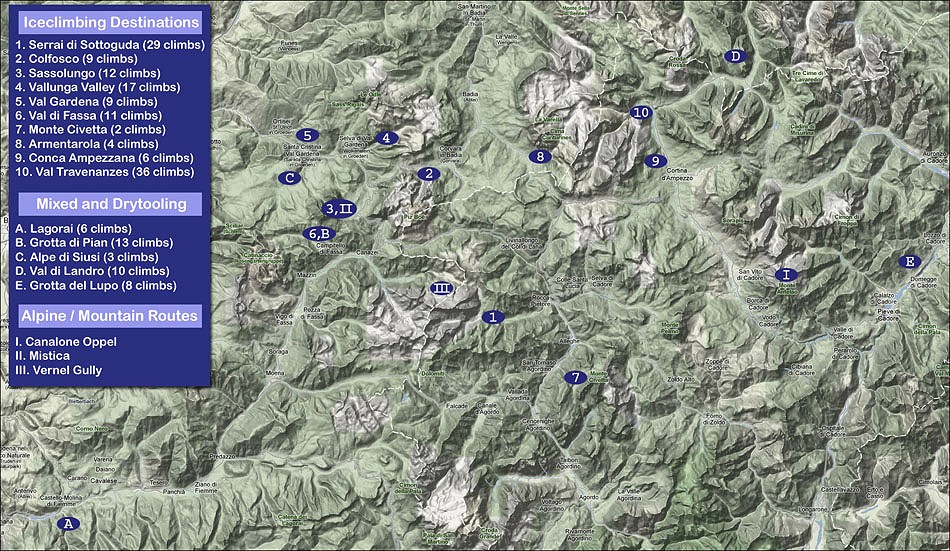
Logistics
Accommodation Advertise here
No Premier Listings found in this area
Instructor/Guides Advertise here
Outdoor Shops Advertise here
No Premier Listings found in this area
James Rushforth is an accomplished climber, skier / mountaineer and has just completed the new Rockfax guide - The Dolomites: Rock Climbs and Via Ferrata and is currently working on another guide to Italian sport-climbing destination Finale Ligure.
James Rushforth is a professional photographer and you can see his portfolio on Smugmug, and follow him at JamesRushforth.com
- DESTINATION GUIDE: The Dolomites - Via Ferrata 12 Jul, 2015
- The Dolomites - 5 Easy Route Recommendations 4 May, 2015
- Dolomites - Ski Mountaineering and Snowshoeing 26 Mar, 2015
- CAPTURING THE STARS: Night Sky Photography 16 Oct, 2014
- DESTINATION GUIDE: The Dolomites 22 Apr, 2010
- Climbing the Comici - VII / E3 5c, Dolomites 21 Apr, 2010



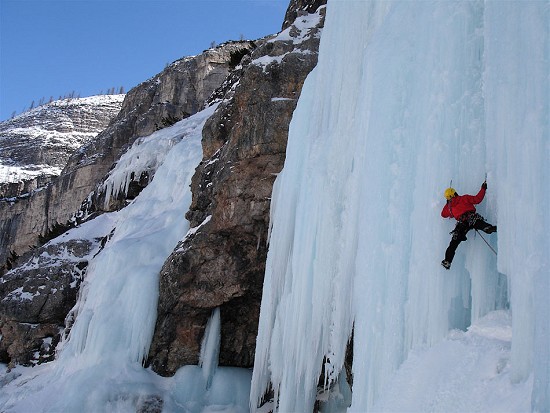
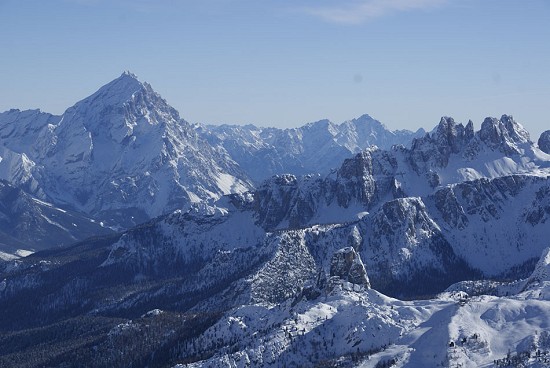

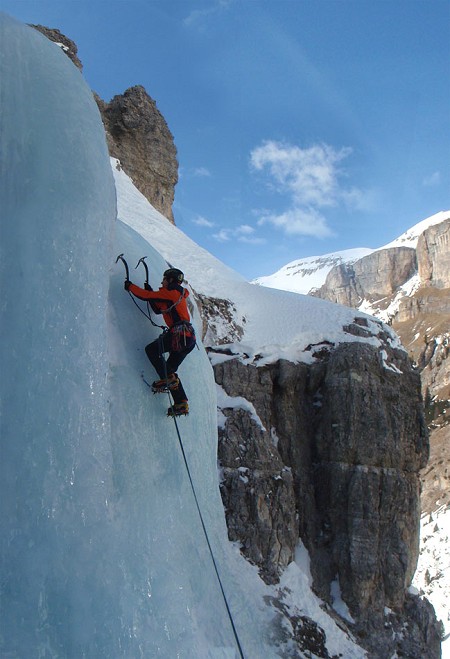
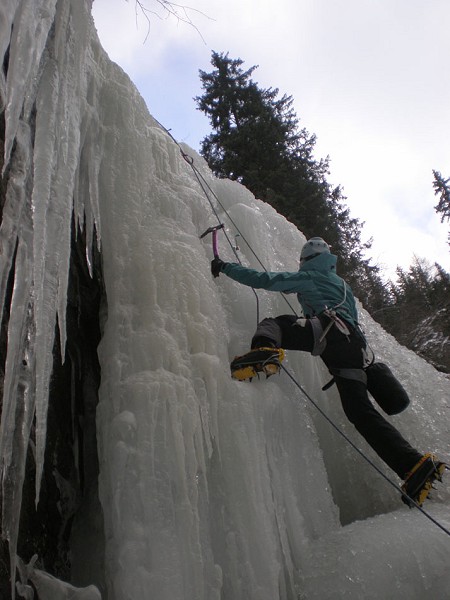
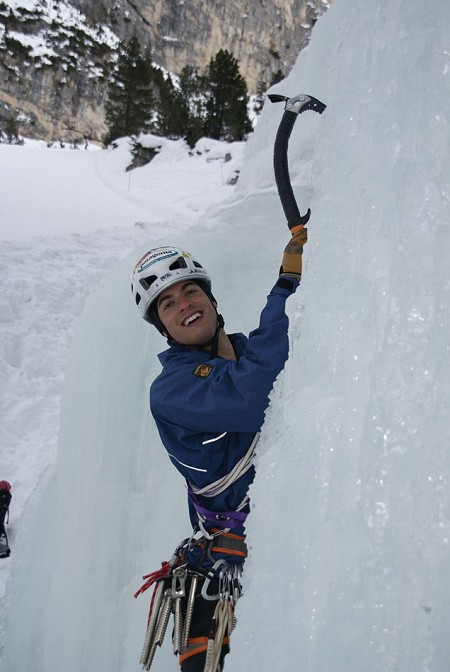
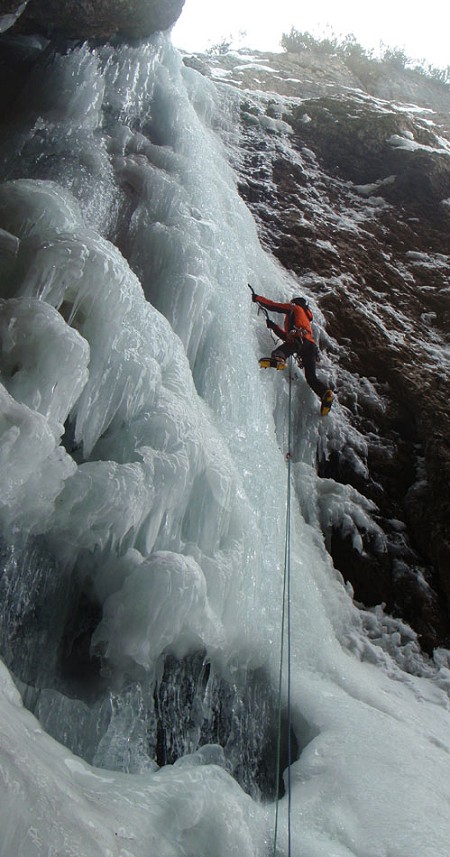
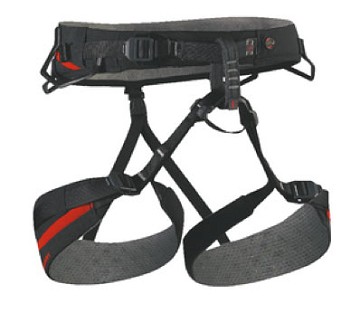
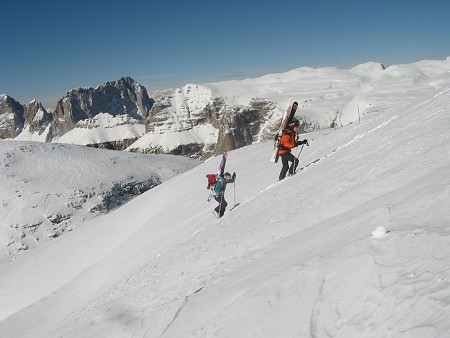
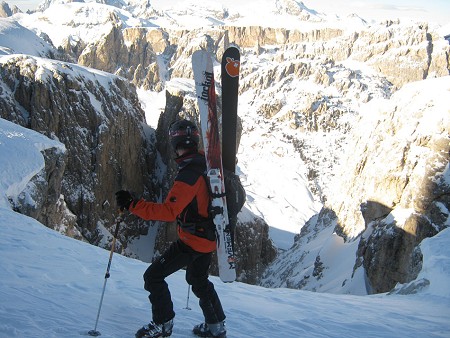
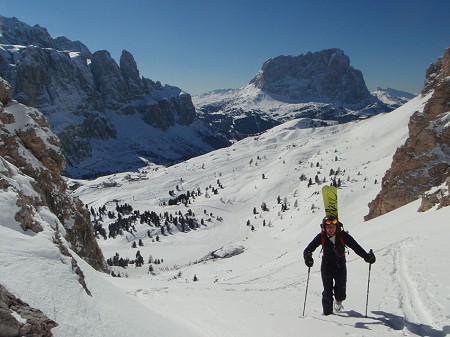


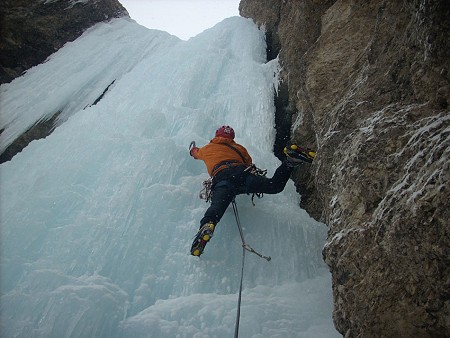

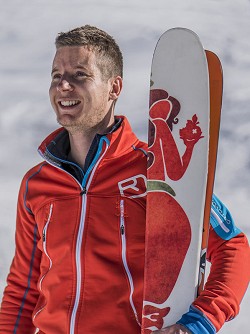
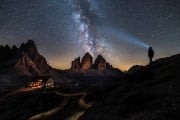
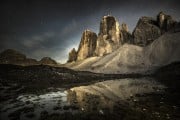


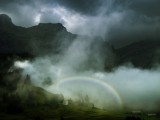

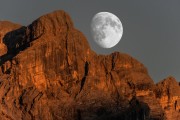

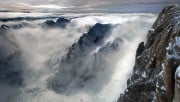


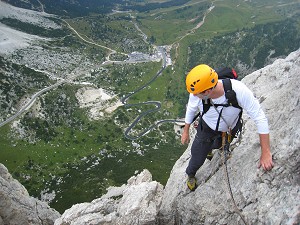
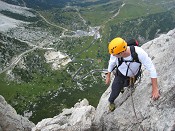





Comments